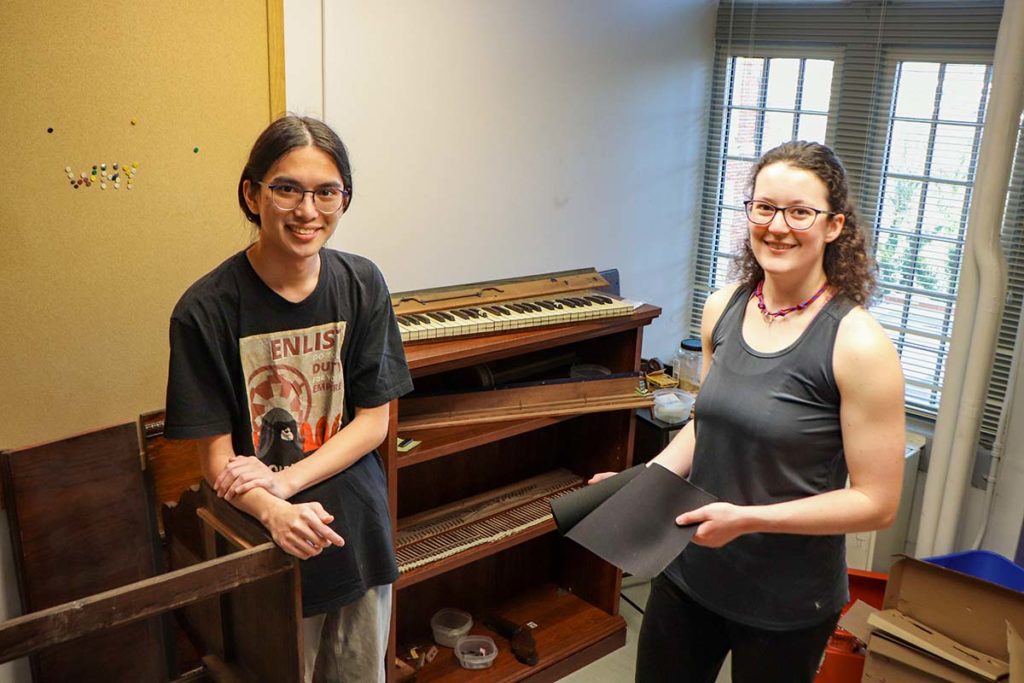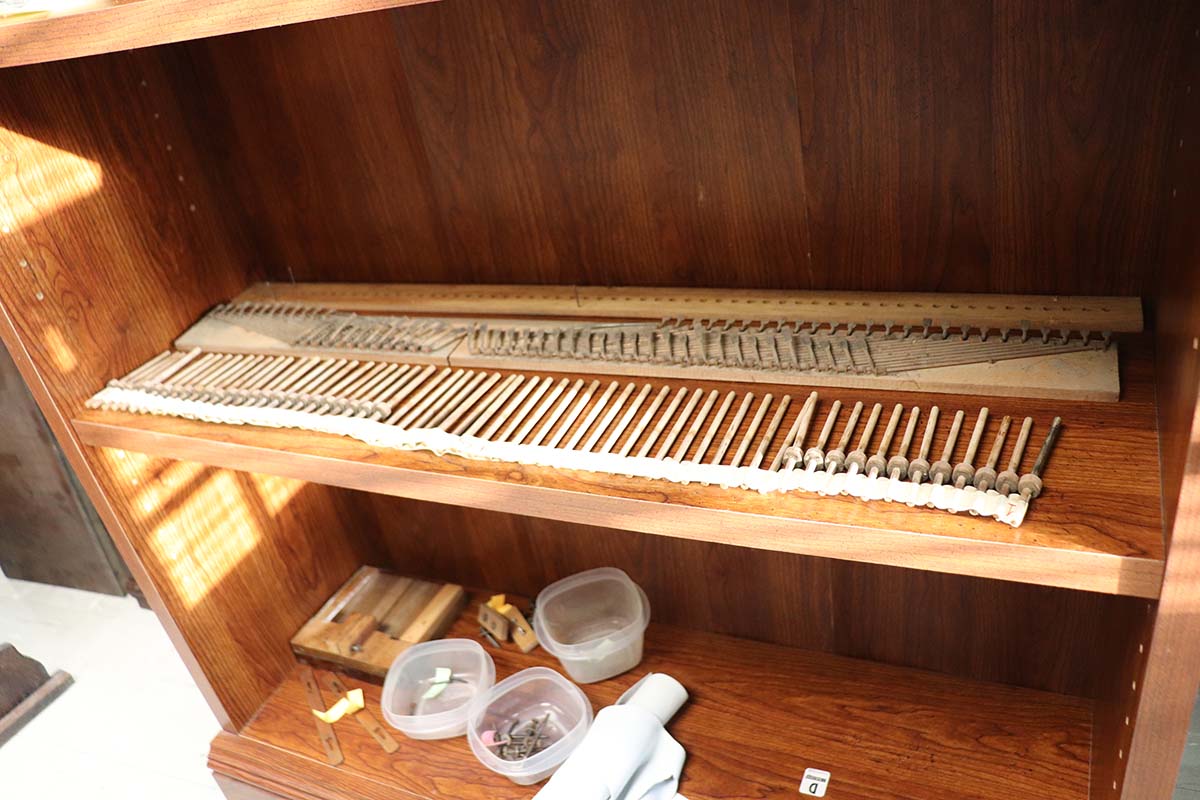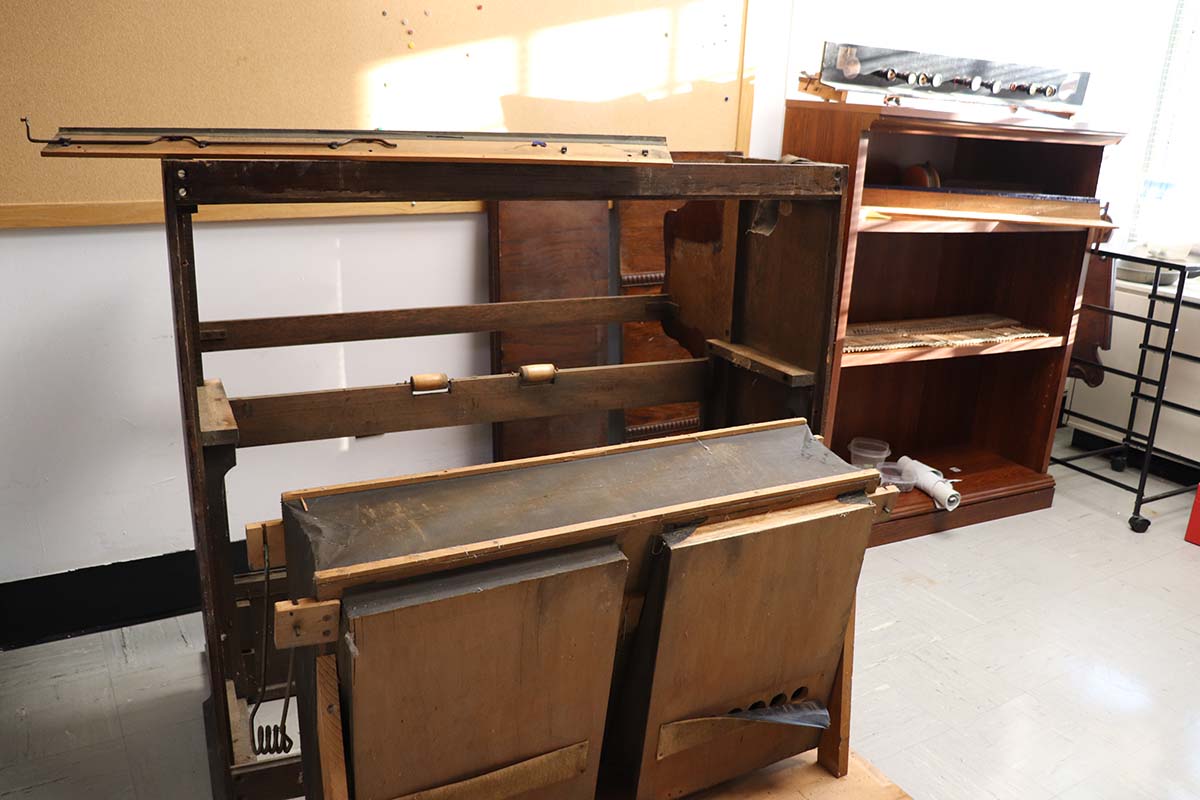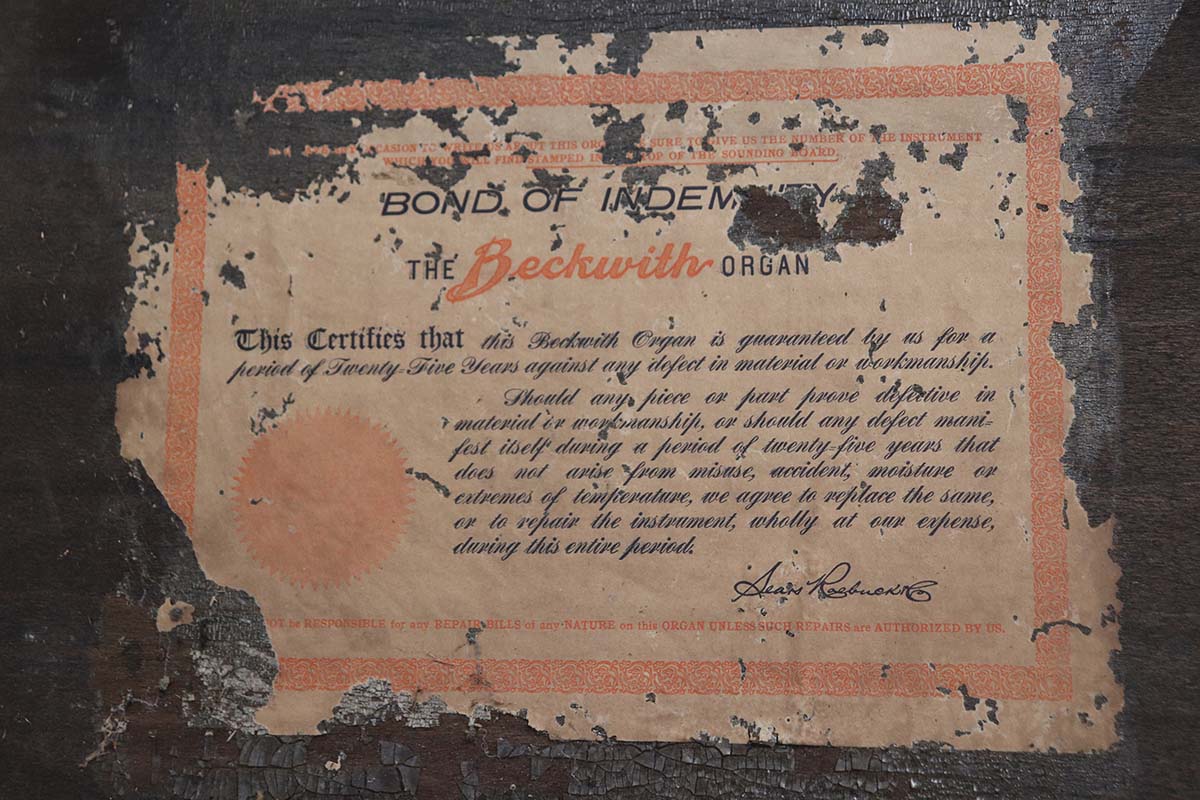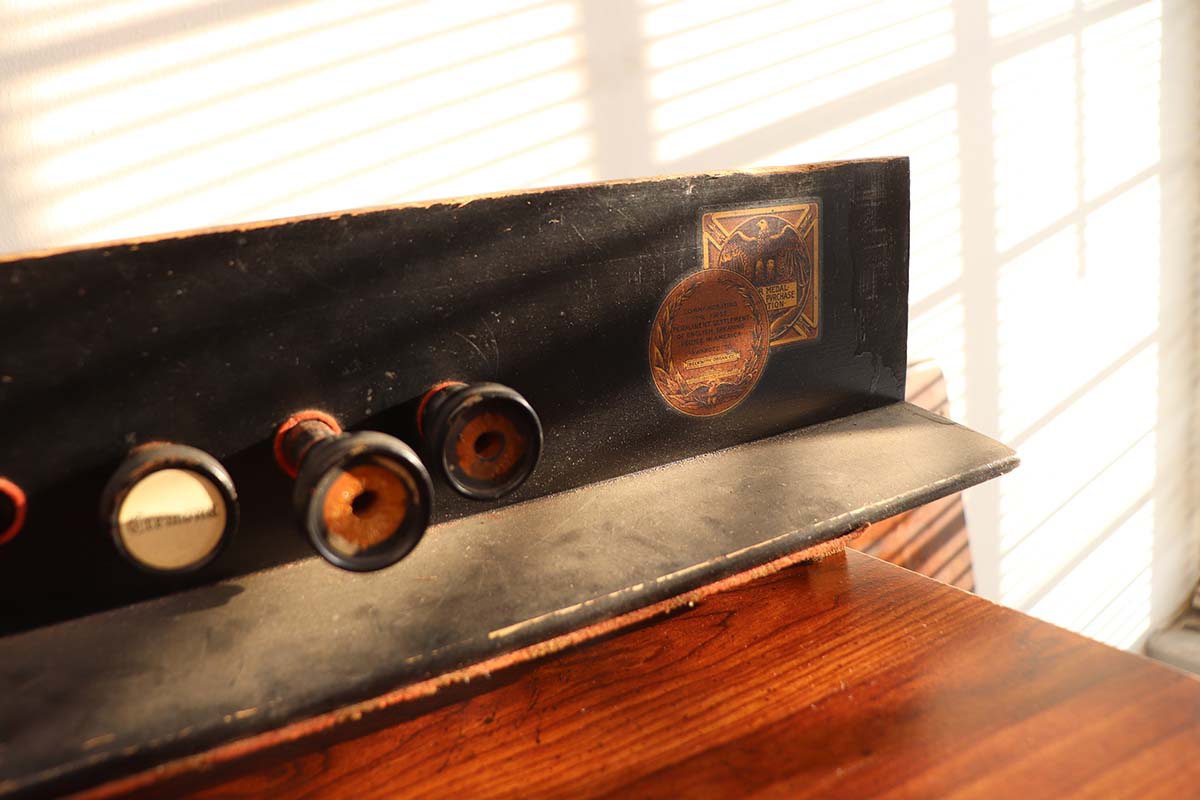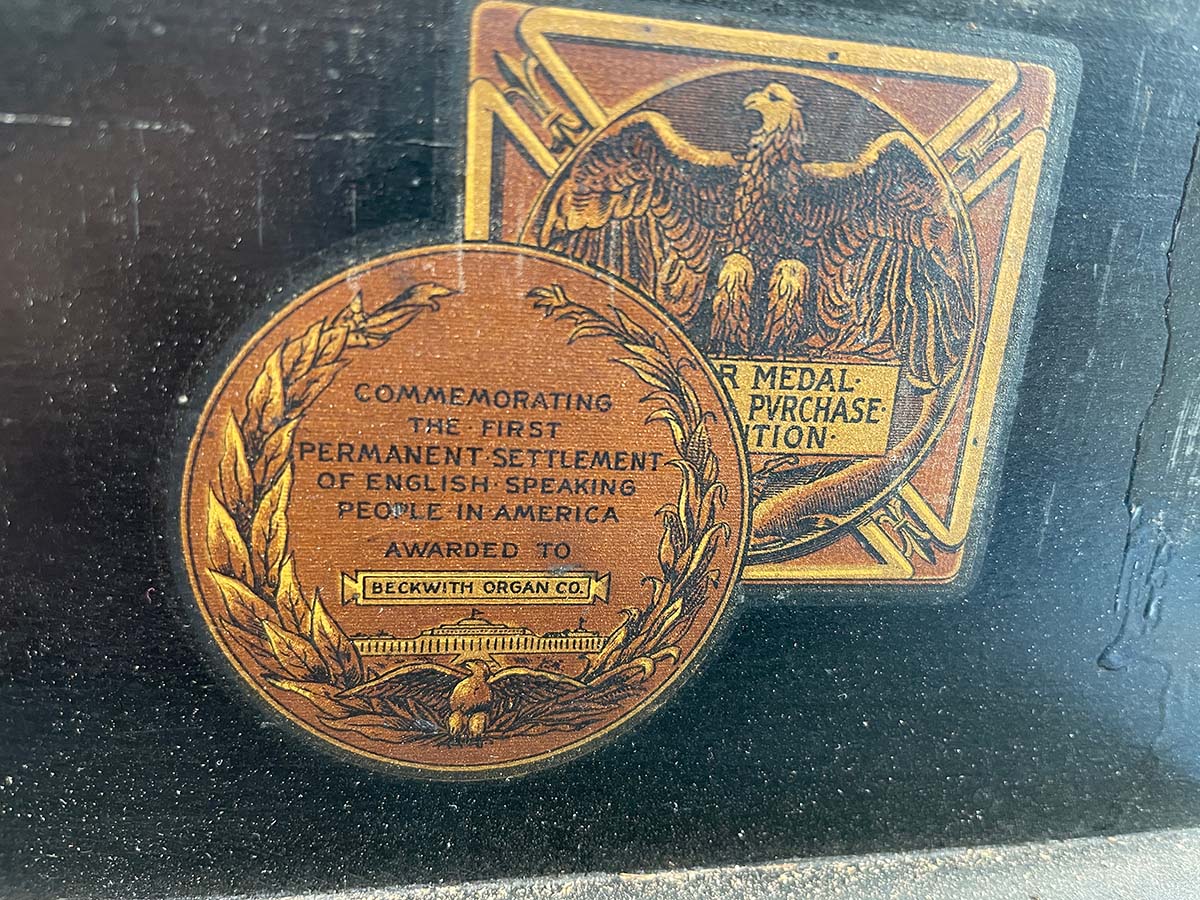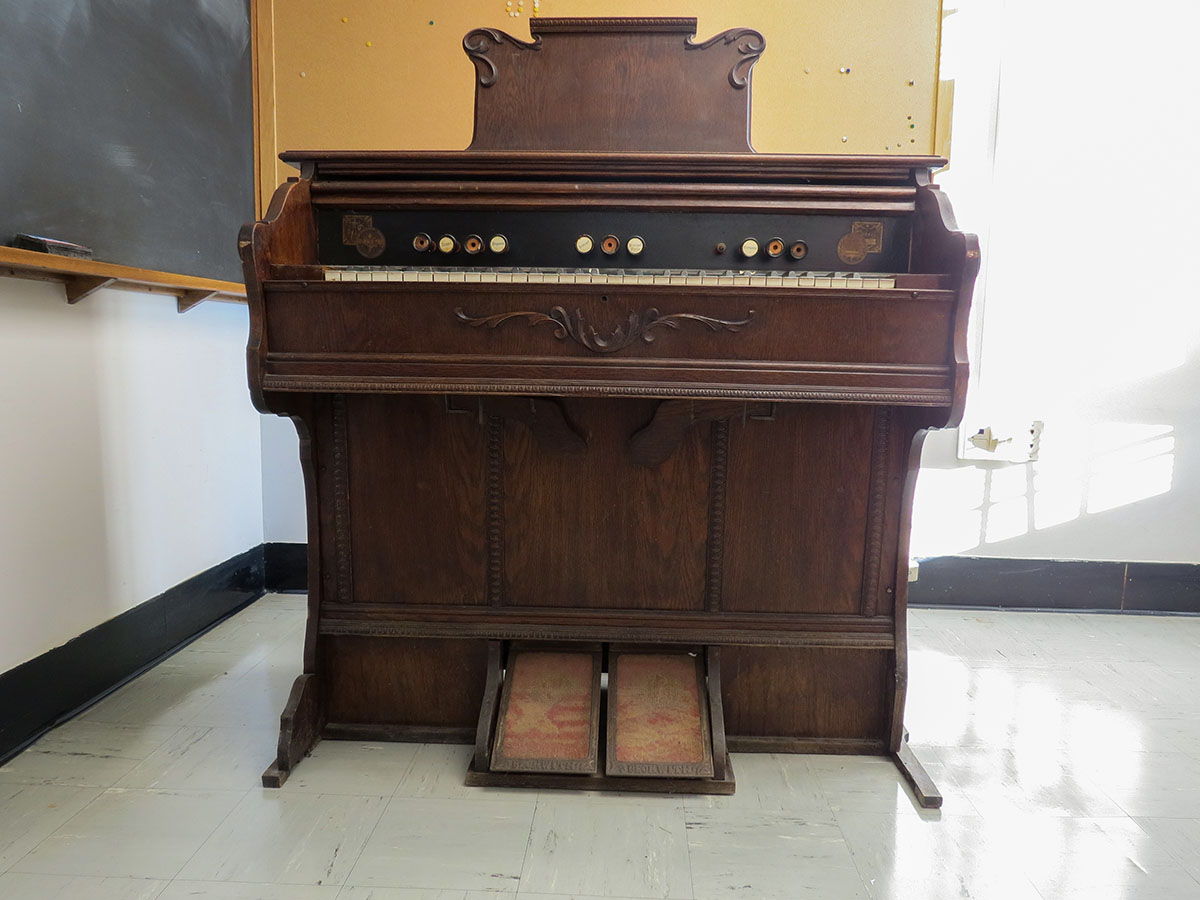Matthew Valderrama found a way to channel his dual passions for music and science into restoring a unique piece of history. He recently formed a team of Engineering Vols and launched a project to refurbish a 100-plus year-old Beckwith pump organ.
As an added layer to simply rebuilding the organ, the team is specifically taking a materials science and engineering approach to the project. They aim to repair it using materials as close to the original as possible.
“This includes replacing and repairing damaged components, treating the metal for any corrosion, and intensive cleaning,” said Valderrama. “We wish to adhere as close as possible to the original design while respecting conservation ethics. This is an engineering project, and we wish to serve the organ craft with our passion and know-how of materials science.”
His inspiration for this endeavor started even before he came to UT, when he was a high-school band student with a desire to be a better flute player. It coalesced in the college’s Innovation and Collaboration Studio with a train whistle.
“My passion for music stems from Jay Romines, my high school band director and former saxophone professor and Pride of the Southland director for UT,” he said. “He showed me that a successful work ethic must be paired with careful decision making and genuine motivation. Those ideals first materialized through consistently striving and moving towards being a better flautist.”
Before this project, Valderrama had never gone in-depth to merge science and music, but ultimately hopes to incorporate scientific advances into the making of musical instruments.
“I’ve always looked for small ways to test myself,” he said. “One day, I was trying to make a train whistle in the ICS, and I was failing miserably.”
A classmate suggested he look for something via Facebook Marketplace or Craigslist that might be easier to tinker with.
“I found the organ on Facebook Marketplace, but I was still hesitant,” said Valderrama. “That same classmate asked me ‘Why not? What could go wrong?’ And so, I bought the organ.”
Though starting off with the intent of a personal project, Valderrama turned to his professors for advice and potential sources of information. Having piqued the interest of several professors, the idea of turning this project into an academic based one was conceived.
Valderrama turned his sights to then find collaborators and supervisors. Looking within the department, Dr. David Keffer had previously advised a senior design project centered on producing and analyzing musical tones. Dr. Keffer tasked Valderrama to submit a project proposal which clearly and concisely stated the task at hand, the role of materials science, and the goals of the project.
“I realized I needed a team of students to work with,” said Valderrama. “After asking around, Charlotte Buchanan approached me, and we talked quickly before our next class. Both Chris Webb and MacKenzie Camp overheard and approached me after class. With just a few conversations, I realized all three of them could bring unique experiences to the table.”
Webb has a biomaterials background and does polymer research. Buchanan shared a musical background and has an interest in anthropology. Camp had previously worked on repairing antiques.
“Within just a few hours, I found a group of students who were interested and brought their own passions to this project,” said Valderrama.
Working as a team, the students wrote and revised a project proposal worthy of Dr. Keffer’s standards, ultimately getting the green light on the project with Dr. Keffer as the faculty supervisor.
The team’s first challenge was determining which materials they needed to investigate for the restoration. They consulted Brad Rule, a local organ mechanic, who helped them dissemble the organ.
“After learning more about organ repair, we realized we had a large number of unknowns and little direction on where to look,” said Valderrama. “Many of the processes, materials, and sourcing from the turn of the century were not well documented.”
They spent a few weeks contacting around two dozen people and skimming numerous books, some published in the 1910s, to put together a shopping list for parts and materials.
“In terms of restoration, we are aiming for full mechanical repair,” said Valderrama. “We may break something, but at the end of the day, we are here to study, document, and learn about a tiny glimpse of history that might have been overlooked and lost with time.”
